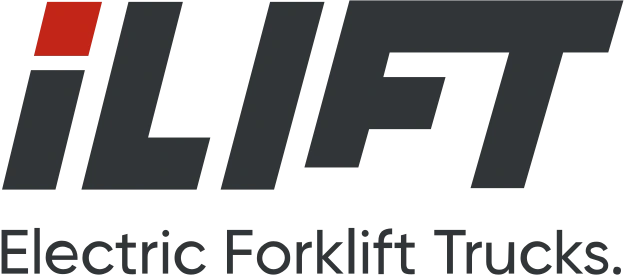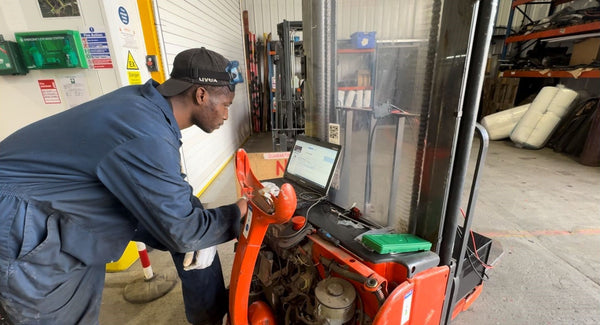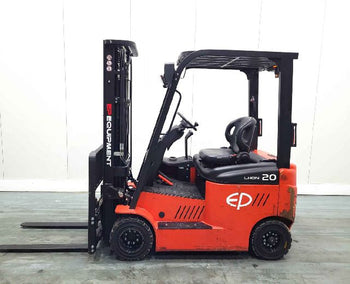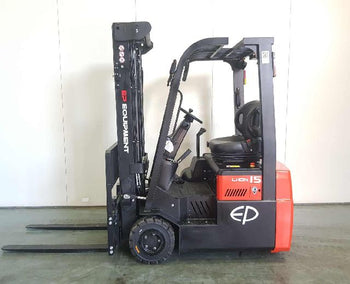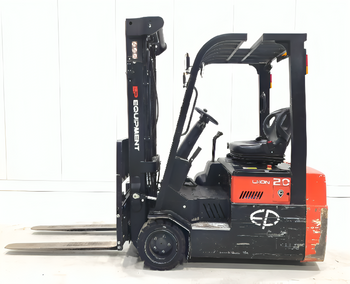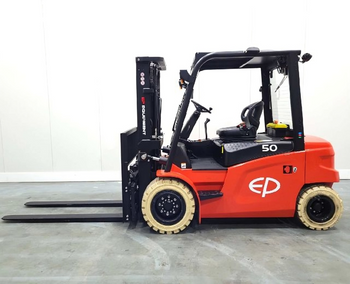Regular electric forklift inspections are a cornerstone of safe and efficient operations. Forklifts might be everyday workhorses, but that doesn’t mean we can overlook their maintenance. In fact, forklifts are involved in a significant number of workplace accidents each year – roughly one in ten warehouse accidents involve forklifts, leading to tens of thousands of injuries worldwide. Many of these incidents are preventable with proper upkeep. That’s why an electric forklift inspection checklist is so important. In this post, we’ll explain why regular inspections matter, what makes an electric forklift’s checklist unique, and exactly which points to include. We’ll also provide a handy sample checklist (in both bullet and table format) and some extra tips on conducting checks. Let’s dive in!
Why Regular Forklift Inspections Are Important
Conducting thorough pre-use inspections of your electric forklift isn’t just bureaucratic red tape – it’s a critical safety practice. A daily checklist helps to catch small issues before they turn into big problems. Here are a few key reasons why regular inspections are essential:
-
Ensure Safety: A proper checklist ensures the forklift is safe to use before every shift, helping prevent accidents or equipment failures before they put someone at risk. It’s far better to spot a worn brake or a leaking battery before an incident occurs.
-
Prevent Accidents and Injuries: Forklift accidents can cause serious harm. Regular checks reduce the chance of incidents caused by equipment malfunction. Something as simple as a low tyre or a faulty brake light could lead to a mishap if unnoticed.
-
Reduce Downtime: By identifying issues early, you can address them proactively and avoid sudden breakdowns. This reduces unplanned downtime due to improperly maintained equipment – keeping your operations running smoothly.
-
Extend Equipment Life: Maintenance checks help extend the life of your electric forklift. Taking care of the battery, tyres, and other components means they’ll wear more slowly, and your forklift will serve longer before needing expensive repairs or replacements.
-
Compliance and Best Practice: In many workplaces, daily or pre-shift inspections are a standard requirement. Safety authorities and manufacturers alike recommend (and often require) that forklifts be inspected at least once per day, or before each shift if they’re used round-the-clock Failing to do so not only endangers people but could also put your company at risk of non-compliance (even if we’re not delving into specific regulations here).
In short, regular inspections carried out with a thorough checklist protect your people, your property, and your investment in the equipment. It’s a small daily step that pays huge dividends in safety and reliability.
Tailoring Your Checklist for Electric Forklifts
All forklifts need inspection, but an electric forklift has some unique features that warrant special attention. You shouldn’t just grab a generic checklist that’s meant for petrol or diesel forklifts – many items will not apply, and you might miss critical electric-specific checks. A checklist specifically tailored to electric forklifts is crucial for a few reasons:
-
Different Power Source: Instead of an engine and fuel, you have a battery and electrical systems. So, checks like engine oil or LPG tank security aren’t relevant. Instead, you’ll be focusing on the battery’s condition, charge, and connections.
-
Unique Components: Electric models may have components such as battery restraints, onboard chargers, or power cables that internal combustion trucks lack. These need to be on your list.
-
Avoiding Missed Items: Using an equipment-specific checklist ensures nothing critical is overlooked. Industry guidance strongly encourages using checklists specific to the exact equipment so that all relevant parts are covered and irrelevant items don’t cause confusion. In other words, tailor your checklist to fit your forklift like a glove.
-
Consistency and Clarity: A dedicated electric forklift checklist makes it clear to the operator what needs checking. For example, instead of a generic “engine” check (which doesn’t apply), it will list “battery electrolyte level” or “battery charger cable” so the operator knows exactly what to do.
Remember, you can certainly base your checklist on a standard one, but customise it for your electric models. Many companies create their own company-specific checklists to suit their equipment and working environment, ensuring that nothing is missed by a one-size-fits-all list. The goal is a thorough, relevant checklist that covers everything an electric forklift requires for safe operation.
Key Inspection Points for Electric Forklifts
So, what should go on an electric forklift inspection checklist? Below we’ve compiled at least 10 key points that every electric forklift operator or maintenance team should check. These cover the fundamentals – including the battery, controls, brakes, tyres, lights, steering, and overall functionality – and more. Use these as the core of your checklist (and add any additional items specific to your particular truck model or workplace).
-
Battery & Electrical System: The battery is the heart of an electric forklift. Check the battery charge level (is it sufficiently charged for the shift?) and ensure the battery connector and cables are in good condition – no frayed wires, loose connections, or exposed insulation. Inspect the battery restraint or hold-down mechanism to be sure the battery is secure. If your battery is the refillable lead-acid type, check electrolyte (water) levels and top up as needed (following proper safety procedures). Also, ensure the battery shows no signs of leaking or corrosion around terminals. A quick look at any onboard battery indicator or display can help confirm all is well. Since the entire forklift depends on the battery, any issue here is a show-stopper!
-
Controls & Instrumentation: Test all operational controls to verify they function correctly. This includes the lift and tilt levers, side-shift or other attachment controls (if applicable), and the accelerator pedal or direction controls. For example, when you move the hydraulic control levers, does the mast raise, lower, and tilt smoothly? Ensure that all switches and buttons are clearly labelled and working (directional controls, ignition, etc.). Also check the instrument panel and gauges – things like battery discharge indicator, hour meter, and any warning lights or displays. Controls should respond properly with no sticking or delay and return to neutral/off positions when released. In short, if the forklift has a button, pedal, or lever, make sure it does what it’s supposed to do.
-
Brakes (Service & Parking): Test the foot brake (service brake) by pressing the pedal – it should feel firm and responsive, not spongy. The forklift should come to a smooth stop without needing excessive force on the pedal. Next, check the parking brake (handbrake): engage it and ensure the forklift does not move when you gently try to drive forward. The parking brake should hold the truck stationary, even on a slight incline. Don’t forget to verify that the brake lights illuminate when you press the brake pedal. Faulty brakes on a heavy forklift can be extremely dangerous, so this is a critical item. If anything feels less than 100%, it should be investigated and fixed before operation.
-
Steering: A quick steering check can reveal a lot about the forklift’s condition. Test the steering wheel for smooth operation – it should turn freely without excessive resistance or any “binding” feeling. There should also be minimal free play (the wheel shouldn’t feel loose). Drive the forklift slowly in a small circle or back and forth and ensure it responds accurately to your steering inputs. If you notice any unusual stiffness, jerking, or if the forklift doesn’t track properly, there may be an issue with the steering hydraulics or linkages. Good steering is essential for safety in tight warehouse environments. (As an aside, if you feel you need to use much more force than usual to steer, check your tyre pressure too – low pressure can make steering heavy.)
-
Tyres and Wheels: Inspect all tyres for damage and wear. For pneumatic (air-filled) tyres, check that they are inflated to the correct pressure (using a gauge if available) and look for any cuts, bulges, or embedded objects (like nails) that could cause punctures. For solid tyres, ensure there are no large chunks missing and that they aren’t excessively worn down. Also check wheel nuts (lug bolts) if visible – they should be tight and none missing. Driving with damaged or under-inflated tyres is a recipe for poor handling and even accidents. Make it a habit to give the tyres a quick kick or visual once-over on every inspection. Ensuring proper tyre condition not only keeps the forklift safe to drive but also prevents unexpected downtime from blowouts or flats.
-
Lights and Indicators: Verify all lights are working and undamaged. This includes front headlights (for seeing ahead), rear lights, brake lights, and any warning strobe or beacon on the forklift. If your forklift has turn indicators or reversing lights, check those as well. Lights should be clean (wipe off any dirt) and bulbs unbroken – replace any burnt-out bulbs immediately. For electric forklifts used indoors, lights are crucial for alerting pedestrians to your presence, especially in dim warehouse areas. A checklist should also cover any built-in display indicators on the dash: for instance, if a warning light stays on (e.g. a service light or an hour-meter alert), that should be noted and investigated. In summary, make sure the forklift can see and be seen.
-
Horn & Audible Alarms: Test the horn – it should produce a loud, clear sound. This is one of your primary safety devices for alerting others in the work area, so it must work properly every day. If your forklift has a backup alarm (an automatic beeper that sounds when in reverse) or other audible warning alarms, check those as well by putting the forklift briefly in reverse gear. All audible signals should be loud enough to be heard over ambient noise. Never operate a forklift if the horn isn’t functioning – it’s simply too important for preventing collisions. A friendly expert tip: some facilities also install blue or red spotlight alarms on forklifts (which shine on the floor ahead or behind to warn of approach); if you have those, verify they are operating too during your light check.
-
Forks and Mast: Examine the forks for any cracks, bends or distortions. Pay special attention to the fork heels (the bend area at the back of the forks) as that’s where cracks often develop under stress. Check that both forks are securely attached and locked in position – the retaining pins or clips must be in place to prevent the forks sliding or coming off. The mast (the vertical lift frame) and lift chains deserve careful inspection as well. Look for any visible damage, such as cracked welds or bent sections on the mast. Chains should have proper tension (no excessive slack) and be well lubricated, with no broken links or rust. If possible, raise and lower the mast (without a load) to see that it moves smoothly, and listen for any odd noises. Also confirm the load backrest (the grid at the mast) is firmly attached and not bent – it helps keep loads from falling toward the operator. Essentially, ensure the entire lifting mechanism is in good shape and safe to use.
-
Hydraulic Systems: Electric forklifts use hydraulics to lift and tilt loads, so maintaining the hydraulic system is vital. Check for any hydraulic leaks – look at the ground under the forklift and around hoses, cylinders, and fittings for wet spots or drips of hydraulic oil. Verify hydraulic fluid levels if your model has a sight gauge or dipstick for it (many electric forklifts have a hydraulic reservoir that should be filled to the proper level). During operation, listen for any unusual squeals or “chattering” when using hydraulic functions; these could indicate air in the system or component wear. Smooth operation of the lift and tilt cylinders (as mentioned earlier in the mast check) is a good sign. If your truck has power steering that runs on hydraulics, low fluid could also affect steering, so fluid checks cover that too. In short, no leaks, proper fluid level, and smooth performance are what you want to see.
-
Safety Devices & Features: Modern forklifts come with a variety of safety features – ensure all of yours are present and functional. Seat belt: confirm the seat belt latches securely and retracts properly, with no cuts or frays on the webbing. This is non-negotiable for operator safety. Overhead guard: inspect the overhead protective cage; it should not be cracked, bent or loose. Load rating plate: make sure the capacity/nameplate is legible and firmly attached (so the operator can always see the load limits). Mirrors: if fitted, are they clean and correctly positioned? Warning decals and labels: check that all safety and warning labels (e.g. “No riders”, battery maintenance warnings, etc.) are in place and readable. Some electric forklifts have an emergency power disconnect or “kill switch” – test that it operates (when the forklift is off or as per manufacturer instructions) to ensure you can cut power in an emergency. Essentially, every safety feature provided by the manufacturer should be checked to confirm it will do its job if needed.
-
Overall Operation & Unusual Signs: Finally, do a quick general functional check. Turn the forklift on and drive it forward and reverse a short distance (in a clear area). Listen for any abnormal noises or vibrations from the motor or drivetrain. Pay attention to how the forklift accelerates and brakes – is everything smooth and normal? If something feels off, don’t ignore it. Often your senses can pick up early signs of trouble (a slight grinding noise, or a shudder on braking). Check that the forklift tracks straight and doesn’t pull to one side. Verify that when you let go of the controls, they neutralise (e.g. the forklift doesn’t keep moving when you release the accelerator). This “overall health” check is a catch-all to notice anything not covered in the specific points above. If any unusual symptom is observed, note it down and have it seen by maintenance before continuing to use the truck.
Those are the core items your electric forklift inspection checklist should include. You can certainly add more based on your specific equipment or workplace (for example, if you use attachments like clamps or rotators, include them on the list to ensure they’re secure and functional). The key is that your checklist is comprehensive: it should cover all critical components without exception. Electric forklifts might have fewer engine parts than diesel trucks, but they still require diligent checks of their battery, electrical and hydraulic systems, and structural parts.

Sample Electric Forklift Inspection Checklist (Bullet List Format)
To make life easier, here’s a sample daily inspection checklist for an electric forklift in a simple bullet-point format. An operator can use this as a quick reminder of each point to inspect. You could post this list in your warehouse or keep copies with each forklift. Before each shift or day's use, the operator should walk through this list and verify each item is OK:
-
Battery: Charge level sufficient; no exposed wires; cables secure; electrolyte level OK; no corrosion or leaks.
-
Controls: All levers, pedals, and switches functioning properly; test lift/tilt and other controls for smooth operation.
-
Brakes: Foot brake holds and feels firm; parking brake holds forklift in place; brake lights working.
-
Steering: Steering is smooth with no excessive play or strange noises; forklift turns accurately.
-
Tyres/Wheels: Tyres properly inflated (or in good condition if solid); no significant wear, damage, or debris; wheel nuts secure.
-
Lights: Headlights, tail lights, brake lights, and warning beacon are all working and undamaged.
-
Horn/Alarms: Horn sounds loudly; reverse alarm (if fitted) works; any other warning alarms or lights functional.
-
Forks & Mast: Forks are not cracked or bent and are locked in place; mast chains and rollers appear in good condition and lubricated; no obvious damage to mast or load backrest.
-
Hydraulics: No visible hydraulic oil leaks; hydraulic fluid level within proper range; lift/lower and tilt functions operate smoothly (no jerks or stalling).
-
Safety Devices: Seat belt intact and working; overhead guard and load backrest secure; safety labels and capacity plate present and readable; emergency stop or disconnect works.
-
General Operation: (Engine on) No odd noises or vibrations during startup and operation; gauges/instrument panel show normal readings; no warning lights staying on.
Tip: It’s good practice to carry out the above in two stages – first a visual walk-around check (engine off) to spot leaks, damage, etc., and then an operational check (engine on) to test functionality. Our list combines both for brevity, but you can split them as needed.
Sample Electric Forklift Inspection Checklist (Table Format)
Sometimes a table format is useful for recording inspection results – for instance, an operator can tick off items and note any issues in a comments column. Below is the same checklist presented in a table format for ease of use. This could be printed and used as a daily inspection sheet:
|
Inspection Item |
OK? |
Not OK / Notes |
|
Battery – Charged, connectors secure, electrolyte levels OK, no damage/leaks |
✅ / ❌ |
|
|
Controls – Levers, pedals, and switches all function correctly (lift/tilt etc.) |
✅ / ❌ |
|
|
Brakes – Foot brake responsive; parking brake holds; brake lights work |
✅ / ❌ |
|
|
Steering – Smooth turning, no excessive free play or noise |
✅ / ❌ |
|
|
Tyres & Wheels – Proper pressure/condition; no cuts or loose lug nuts |
✅ / ❌ |
|
|
Lights – Headlights, tail lights, warning lights operational |
✅ / ❌ |
|
|
Horn & Alarms – Horn is loud; reverse alarm/beeper works |
✅ / ❌ |
|
|
Forks & Mast – Forks undamaged & locked; mast, chains in good order |
✅ / ❌ |
|
|
Hydraulics – No leaks; fluid level OK; smooth lift/tilt operation |
✅ / ❌ |
|
|
Safety Features – Seat belt, overhead guard, decals, rating plate checked |
✅ / ❌ |
|
|
General Operation – No unusual noises; gauges normal; no warning alerts |
✅ / ❌ |
|
|
Other/Custom – Any special attachment or site-specific check |
✅ / ❌ |
|
Each row represents an item to inspect, with a space to mark if it’s OK or if there’s a problem/observation. The last row allows for any additional checks specific to your forklift or workplace (for example, if your electric forklift has a side-shift attachment, you’d check that, or if your site has a particular concern like checking forklift cleanliness or horn volume, you can add it). Feel free to modify the list or add more rows as needed. The goal is to have a clear, easy-to-follow form that guides the operator through the inspection and provides a record of the check.
Example of a daily forklift inspection checklist form (including sections for electric forklifts). Operators can tick “OK” or “Defect” for each item and sign off when complete.

Additional Tips for Effective Forklift Checks
Creating a great checklist is the first step. Here are some additional pointers to ensure your electric forklift inspections are effective and hassle-free:
-
Frequency of Inspections: Make it a rule that forklifts are inspected daily, before the first use. If the truck is used across multiple shifts, then each operator should do a pre-use check at the start of their shift. Even if someone says “the last driver already checked it,” it’s important the next operator does their own inspection – conditions can change even within a day. Also consider doing a quick post-shift check or weekly in-depth inspection as needed. Consistency is key to catching issues early.
-
Who Should Perform Checks: In most cases, the forklift operator is responsible for the daily/pre-shift inspection. Operators should be trained not only in driving the forklift but also in how to properly inspect it. Managers and supervisors play a role too: they should ensure checks are being done and documented, and step in if any unsafe conditions are reported. If an operator is unsure about an item, they should consult a supervisor or maintenance personnel before proceeding.
-
Documentation and Record-Keeping: It’s good practice to record each inspection. This can be as simple as a signed paper checklist or an entry in a digital log. Keeping records creates accountability and helps track recurring problems. For example, if an operator finds an issue, it should be noted and reported, and the forklift shouldn’t be used until the issue is fixed. Always check the previous day’s log for any unresolved faults so you know if something still needs attention. These records can also be important for maintenance scheduling and, if ever needed, for demonstrating your diligence in safety protocols.
-
Take Action on Problems: If the inspection uncovers a problem – say the brakes are weak or a hydraulic hose is leaking – do not operate the forklift until it’s resolved. Tag it out of service and inform your maintenance team right away. A checklist is not just a tick-box exercise; when an item is “Not OK,” it’s a call to action. According to best practices, any issues discovered must be reported and the forklift removed from service until repaired. Never gamble with safety by using a faulty forklift “just for a short while.”
-
Regular Maintenance and Thorough Examinations: Daily inspections by operators are a first line of defense. In addition, schedule regular maintenance by qualified technicians (following the manufacturer’s recommended service intervals). Electric forklifts generally require less engine-related maintenance, but they still need care – e.g., battery servicing, brake adjustments, etc. Also, be aware that in many regions, forklifts must undergo periodic Thorough Examination by a competent person (similar to an annual MOT for lifting equipment). While we’re keeping our guidance general here, it’s important to comply with any such requirements in your area to ensure long-term safety.
-
Training and Culture: Ensure that your operators understand why the inspection is important, not just how to do it. An expert yet friendly tone goes a long way – encourage operators to take pride in keeping their equipment safe. Sometimes companies foster a safety culture by involving operators in checklist design or getting feedback on it. When people feel ownership, they’re more likely to perform checks conscientiously. Regular refresher training on forklift operation and inspection can reinforce good habits.
-
Customise as Needed: Feel free to customise the checklist to your situation. The provided list covers universal points, but you may add items like “cleanliness of battery compartment” or checks for specific attachments or environmental conditions (e.g., if operating in cold storage, battery performance or tyre condition in low temperatures might be a concern). The checklist should evolve if you find there are issues cropping up that aren’t explicitly listed – add them in so they get attention each day.
-
Keep the Checklist Accessible: The best checklist is one that’s actually used. Keep copies of the checklist on the forklift or in a readily accessible spot. Some companies laminate a simple checklist and zip-tie it to the forklift, with a grease pencil to mark it each day; others use an app or electronic system. Whatever the method, make sure it’s easy for the operator to follow the checklist without feeling it’s a burden. A clear layout (like the one we’ve provided) and a few minutes at the start of the shift are all it takes.
By following these tips, your electric forklift inspections will become a smooth, routine part of the workday – much like a pilot’s pre-flight check. It might seem repetitive, but that’s a good thing when it comes to safety. As one manufacturer notes, daily checklists ensure forklifts are functioning properly to help prevent issues or injuries. It’s an essential step to reduce dangerous situations and keep everything running like clockwork.
Conclusion
Conducting regular electric forklift inspections using a tailored checklist is an expert-approved practice that significantly boosts safety and efficiency. By including key points such as the battery, controls, brakes, tyres, lights, steering, and more, you cover all the bases needed for safe operation. We’ve provided both a bullet list and a table format so you can easily implement these checks in your daily routine. Remember, the checklist is only as good as the diligence with which it’s used – so train your team, make it a habit, and maintain a positive safety culture around forklift use.
In the end, a few minutes spent on an inspection checklist each day can prevent accidents, save costly repairs, and even save lives. It ensures that your electric forklift remains the reliable workhorse you need while keeping everyone out of harm’s way. So, take the time to inspect and check off that list – your operators and coworkers will thank you for it, and you’ll be able to operate with confidence knowing your equipment is in top shape. Safe driving and happy lifting!
